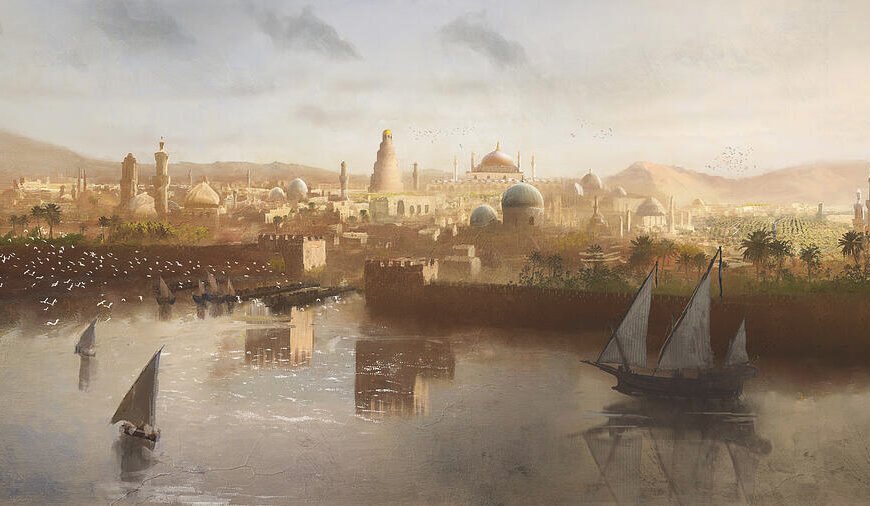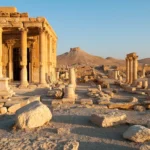There was a time—not that long ago, in the sweep of history—when Iraq wasn’t just the birthplace of civilization. It was a living, breathing system of water. A maze of canals wound through the land, feeding cities, crops, and trade. It earned the nickname Venice of the East, and back then, it wasn’t an exaggeration.

Now? That system is mostly gone. Silted over, dried up, or buried under urban sprawl and political dysfunction.
So what happened?
Water Built the Cradle of Civilization

It started with the Sumerians around 6000 BCE. In a region where rainfall was scarce and the soil parched, they learned to tame the seasonal flooding of the Tigris and Euphrates rivers. Through irrigation canals, they turned hostile terrain into farmland. Not just subsistence—surplus. Enough to build cities1.
By the time the Babylonians took over, the canals weren’t just about agriculture. They connected cities, created trade routes, and helped consolidate political power. Herodotus, writing in the 5th century BCE, famously remarked that the land “yields grain in such abundance that it is unsurpassed”2.
The real golden age came under the Abbasid Caliphate (750–1258 CE). Baghdad, their capital, wasn’t just a political center—it was a masterpiece of hydraulic design. Canals ran through the city like veins, supporting a population so dense, some historians compare it to modern-day Netherlands3. The city’s layout, circular and systematic, was partly shaped by the water it depended on.
These weren’t crude ditches. They were part of a complex system that included regulators, weirs, and drainage basins. Efficient, resilient—until it wasn’t.

The Collapse Wasn’t Sudden. That’s What Makes It Worse.
The Mongol invasion in 1258 is often cited as the beginning of the end. Hulagu Khan’s army sacked Baghdad, destroying key infrastructure. The canals were torn apart along with libraries, markets, and mosques4.
But the true downfall was slower. After the Mongols came centuries of erosion—political, environmental, institutional.
Under the Ottomans (16th–20th century), maintenance of the canals was sporadic at best. Many silted up. Cropland turned to wasteland. The British, when they arrived in the early 20th century, attempted to revive some of the network—but mostly to support colonial extraction, not local needs5.
Then came the dams.
In the modern era, countries upstream—Turkey and Syria in particular—built massive dam projects that cut off the flow of the Tigris and Euphrates. Iraq, downstream and politically unstable, couldn’t stop it. By the early 2000s, what was left of its ancient water system was just a shell of its former self6.
Why This Still Matters
This isn’t just history for history’s sake.
What happened to Iraq’s canals is a case study in what happens when complex systems collapse. Water, politics, war, climate—they all intersected here. And when even one part faltered, the rest began to follow.
Yes, the Mongols played a role. But so did bureaucratic neglect, environmental mismanagement, and geopolitical indifference. The system could have survived. Maybe even adapted. But there was no coordinated effort to preserve it.
As historian William R. Polk put it, “The fate of Iraq’s canals is a microcosm of the broader challenges facing humanity: how to balance progress with preservation, and how to learn from the mistakes of the past”7.
Could It Have Ended Differently?
That question lingers.
Some argue that Iraq’s hydraulic collapse was inevitable. Geography, climate stress, war—it was always going to happen. Others believe there were chances to intervene. Better planning, stronger institutions, and long-term investment might have saved parts of the system.
But hindsight only goes so far. The real takeaway is forward-looking.
We live in a time when more and more societies are struggling with water scarcity. Infrastructure is aging. Climate patterns are shifting. Political attention spans are short. Iraq’s canals are a reminder that once a system starts unraveling, putting it back together is harder than anyone wants to admit.
Want to explore more stories like this? Follow The Hopinoin for independent takes on global history, infrastructure, and what it all means now.
Let me know if you’d like a shorter version for social media, a headline image suggestion, or a companion infographic for publication.
Footnotes
- UNESCO. The Hydraulic Systems of Mesopotamia. https://whc.unesco.org/en/tentativelists/5734/ ↩
- Herodotus. The Histories, Book I. ↩
- World Bank. Water Resource Management in the Middle East and North Africa, 2007. ↩
- Morgan, David. The Mongols. (2nd ed.) Blackwell, 2007. ↩
- Dodge, Toby. Inventing Iraq: The Failure of Nation Building and a History Denied. Columbia University Press, 2003. ↩
- Gleick, Peter H. The World’s Water: The Biennial Report on Freshwater Resources. Island Press, 2004. ↩
- Polk, William R. Understanding Iraq: The Whole Sweep of Iraqi History, from Genghis Khan’s Mongols to the Ottoman Turks to the British Mandate to the American Occupation. Harper Perennial, 2006. ↩














